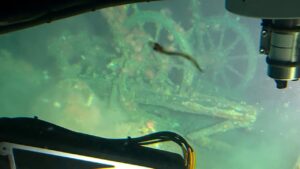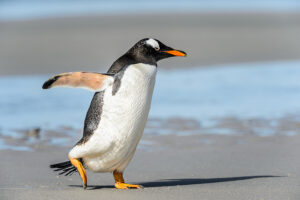There’s a reason that adventurers continue to marvel at Ernest Shackleton’s Antarctic expedition over 100 years later: it lives up to the hype.
Every part of the iconic survival story — from the 1914 struggle to sail Endurance through dense ice floes to the crew’s miraculous homecoming two years later — still feels thrilling.
Yet nothing rivals its grand finale: Shackleton and two crew members crossing the “impassable” island of South Georgia to reach a tiny whaling outpost and bring aid to their comrades.
Early this month, a team from the polar exploration group Vinson of Antarctica completed a ski trip across the island, loosely following in Shackleton’s footsteps. The small team started and ended in the same places as the explorer, but chose an entirely different route in between.
An alternative route
“I know,” mountaineer Stephen Venables said early on, “let’s take the route that Shackleton should have gone. I’ve not done it but I’m sure it’ll be much easier and even more beautiful.”

Enjoying South Georgia’s “trumpeting penguins”. Photo: Stephen Venebles
Judging from the expedition’s many blog posts, that’s exactly what happened. They completed the journey in five days, enjoying excellent weather and good skiing, thanks to their modern equipment.
The team clearly idolizes Shackleton’s journey. Yet they seemed more interested in enjoying South Georgia than trying to follow the explorer’s exact route.
“Whether this was a better route than Shackleton’s, I’ll never know,” expedition member Caroline Hamilton wrote. “What I do know is…we had the most amazing time…I didn’t want it to end. I wished we could have turned around and done it all again.”
Shackleton himself would not have been quite so enthusiastic.

A comparison of Shackleton’s original 1916 journey versus the route taken this year by Vinson of Antarctica. Image: Vinson of Antarctica
Unfinished business
The team might have enjoyed the journey — but that doesn’t mean it was easy.
They first tried the Alternative Shackleton Traverse back in 2014. Unfortunately, snow, rain, and 60-knot winds turned them back.
So for Stephen Venables, the trip represented “unfinished business”.
Thanks to good weather, this attempt went more smoothly. By day two, “the wind abated, the sun shone and all was sweetness and light,” Venables wrote.
The team skied the whole distance, hauling light sleds behind them. They arrived at the Esmark Glacier for their second camp, enjoying a dinner that Shackleton would have envied: soup and risotto followed by hot chocolate with brandy.
Yet the team clearly worked hard to reach its goal, dealing with “impossibly steep cols” that required hours of zigzagging. The hardest sections featured a “serrated ridge of shattered rock”.
As a result, crossing the Kohl Plateau to the König Glacier required an “impromptu human funicular” (shown in the photo below).

Steep rock required creative solutions. Photo: Caroline Hamilton
“No great problem,” Venables wrote of the obstacle. “You just have to haul all the pulks [sleds] up one side, secure them with ice screws, then lower them over the other side, down a 10 metres vertical cliff of collapsing masonry. All good fun, but it took four hours before we could get down to a good campsite on the upper König Glacier.”
Again and again, team members downplayed the journey’s effort by playing up the scenery.
“Everywhere we looked there were brown jagged mountains, covered in snow and ice, and glaciers sweeping down to the sea,” Hamilton wrote. “Blue ice, grey ice, white ice – as the light changed through the day, everything looked different.”
No doubt the Vinson team enjoyed the journey more than Shackleton enjoyed his. In 1955, a British survey team attempted to recreate the exact mountaineering route that Shackleton took back in 1916. Since then, others have also done the route, but not so many to make it commonplace.
Despite having modern climbing equipment — and actual climbers — team leader Duncan Carse expressed awe for what Shackleton accomplished.
“I do not know how they did it, except that they had to,” he wrote. “Three men of the Heroic Age of Antarctic exploration with 50 feet of rope between them — and a carpenter’s adze.”






